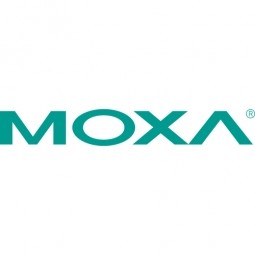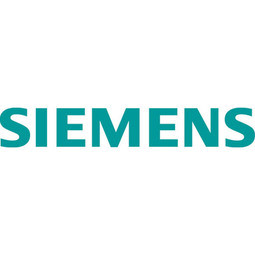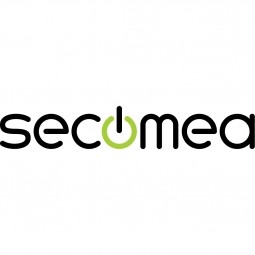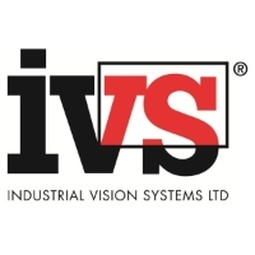Case Studies
-
(5)
- (2)
- (2)
- (1)
-
(4)
- (2)
- (2)
-
(3)
- (3)
-
(2)
- (2)
-
(2)
- (1)
- (1)
- View all 8 Technologies
ANDOR
- (6)
- (1)
ANDOR
- (2)
- (1)
- (1)
- (1)
- (1)
- View all 6 Functional Areas
ANDOR
- (3)
- (1)
- (1)
- (1)
- (1)
- View all 5 Use Cases
ANDOR
- (1)
ANDOR
- (2)
- (2)
- (1)
- (1)
- (1)
- View all 8 Suppliers
ANDOR
Please feel encouraged to schedule a call with us:
Schedule a Call
Or directly send us an email:
Compare
|
|

|
Industrial Automation Case Study
For nearly two decades, Spectrum CNC Technologies has been revolutionizing the computer numerical controlled (CNC) machine tool industry. Its software-based machine tool communications system, MultiDNC, was the first product on the market to enable simultaneous uploads, downloads and dripfeeding of data to multiple CNC controls. Over the years, Spectrum has continued the revolution with innovative products, services and unbeatable support for the best overall value available in the industry. Two years ago, Spectrum began development on a wirelss solution for its Multi-DNC system, something its customers had been asking for. Spectrum knew that a wireless industrial automation solution could bring many new and compelling benefits, including simplified and less costly installation, increased reliability and enhanced flexibility for machine movement. Spectrum CNC also knew that a wireless solution for Multi-DNC would position the company for strong growth. However, company executives did not want to rush to market with an unreliable system. Having worked with Lantronix in the past, Spectrum was confident that Lantronix could recommend the best product to embed wireless networking capabilities into its Multi-DNC system.
|
Download PDF
|
|
|

|
Moxa was asked to provide a connectivity solution for one of the world's leading cosmetics companies. This multinational corporation, with retail presence in 130 countries, 23 global braches, and over 66,000 employees, sought to improve the efficiency of their production process by migrating from manual monitoring to an automatic productivity monitoring system. The production line was being monitored by ABB Real-TPI, a factory information system that offers data collection and analysis to improve plant efficiency. Due to software limitations, the customer needed an OPC server and a corresponding I/O solution to collect data from additional sensor devices for the Real-TPI system. The goal is to enable the factory information system to more thoroughly collect data from every corner of the production line. This will improve its ability to measure Overall Equipment Effectiveness (OEE) and translate into increased production efficiencies. System Requirements • Instant status updates while still consuming minimal bandwidth to relieve strain on limited factory networks • Interoperable with ABB Real-TPI • Small form factor appropriate for deployment where space is scarce • Remote software management and configuration to simplify operations
|
Download PDF
|
|
|

|
The discrete manufacturing domain is characterized by a strictly hierarchical structure of the automation systems, commonly referred to as the automation pyramid. Data acquired by a sensor typically flows through an IO-module into a Programmable Logic Controller (PLC) which manages the local real-time control system. As all process data are concentrated in the PLC, re-programming the PLC and thus, implementing interfaces to access these data appear to be the natural choice to transfer them to the IT system. However, for brownfield installations this choice has proven impracticable for the following two reasons:In brownfield facilities, PLC usually operate within a once-specified environment and are rarely re-programmed. That is why the active staff is often not familiar with the code and lacks of the competence to modify the existing implementation in a reasonable amount of time.Furthermore, for cost reasons, any PLC was selected to exactly match the requirements of the environment within which it was intended to operate. That is why it cannot be assumed that a PLC will be able to support additional tasks such as communicating data through additional interfaces.
|
Download PDF
|
|
|

|
Lordan needed a manufacturing automation system that could identify bottlenecks, reduce downtime and waste, and improve overall equipment effectiveness (OEE). Requirements included the ability to view overall throughput and track mission-critical manufacturing information in real time directly from the production floor, rather than rely on periodical assessments.
|
Download PDF
|
|
|

|
Emerald worked with Cisco to shrink the time to production for its manufacturing process automation system. The leadership team sought self-deployed solutions that would drastically decrease installation time, reduce complexity, and increase security.
|
Download PDF
|
|
|

|
Optima wanted to create a seamless digital process chain, starting with product and machine design and continuing through the engineering right on to production automation and increase the production flexibility.
|
Download PDF
|
|
|

|
Applied Automation needed an efficient yet effective way to do customer services without sending the engineers to all parts of the world.Ongoing customer support is provided by the company’s engineers based on the south west coast of England. They need a remote access solutions which allow them to do customer service in England.
|
Download PDF
|
|
|

|
Keeping Product Development Cycles on the Fast Track
By network-enabling industrial automation equipment, important tasks such as uploading/downloading programs, communicating between controllers, and generating e-mail alerts become possible. Unfortunately, the resources needed to design a solution that can seamlessly tie together a wide diversity of network environments that are widely dispersed, plus rapildly deploy that solution, can present a costly challenge to many equipment manufacturers. Virtually all of Rockwell Automation’s customers have widely dispersed and disparate network environments with a mix of 10Mb and 100Mb Ethernet devices. Having connectivity that would seamlessly accommodate either Ethernet standard became a necessity. Therefore, the company determined that a 10/100Mb Ethernet auto switching capability was required for the ENI interface. Two significant challenges faced the Rockwell design team. First, the small “footprint” of the ENI packaging made the task of finding a networking solution that would fit into the product design very daunting. In addition, time-to-market was a driving factor. In a highly competitive market, Rockwell Automation needed to deliver their network enabled controller products as quickly as possible, and could not afford long development cycles to integrate networking capabilities.
|
Download PDF
|
|
|

|
Automated Inspection of Axial Piston Motors
Earth moving machines require an immense energy source to provide the power they need for use within civil engineering works. ‘Hydraulic Motors’ allow this power to be applied to enable the machines movement and in addition ‘Control Valves’ also provide the operator with the precise feel and control required to undertake the necessary tasks needed for such machines, including trenching, rock breaking and demolition. These same motors are also used in cranes, wheel loaders and general construction equipment. Though not a new product, the designs of such motors and control valves have been around a few decades, the overall method for manufacture has changed rapidly over the last few years to take account of the need for more modular designs, manufacture and just-in-time manufacturing. Kawasaki Precision Machinery (UK) Ltd based in Plymouth, UK is one of the leading manufacturers of such motors and pumps. They approached Industrial Vision Systems Ltd to come up with a solution to provide automated inspection of such pumps for their semi-automated assembly process. The pumps requiring inspection are at a sub-assembly stage when they are due for the inspection process to take place. Due to the highly modular nature of the construction each part of the pump can have many different derivatives which overall have a different effect on the pump in industrial use. It is therefore critical for the manufacturing process to check all components are the correct type and number for the construction of the pump to begin. Once built it is difficult and costly to rework such units if a fault is detected later in the manufacturing process, therefore automated visual inspection is critical for the success in building quality motors and pumps.
|
Download PDF
|
|
|

|
Ready2Wash needed a partner who can connect a diverse set of machines, systems, and sensors, many of which communicate on different protocols, onto a single platform and make them visible and controllable. Furthermore, the amount of data, data types, and their applications were so vast, that the solution handling it needed to be scalable and flexible.
|
Download PDF
|
